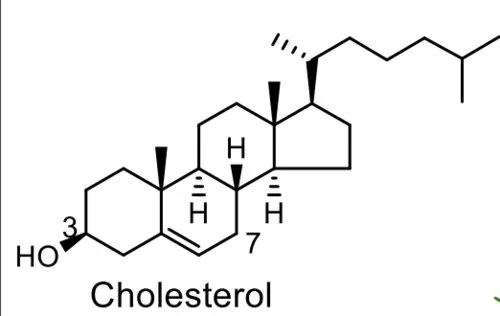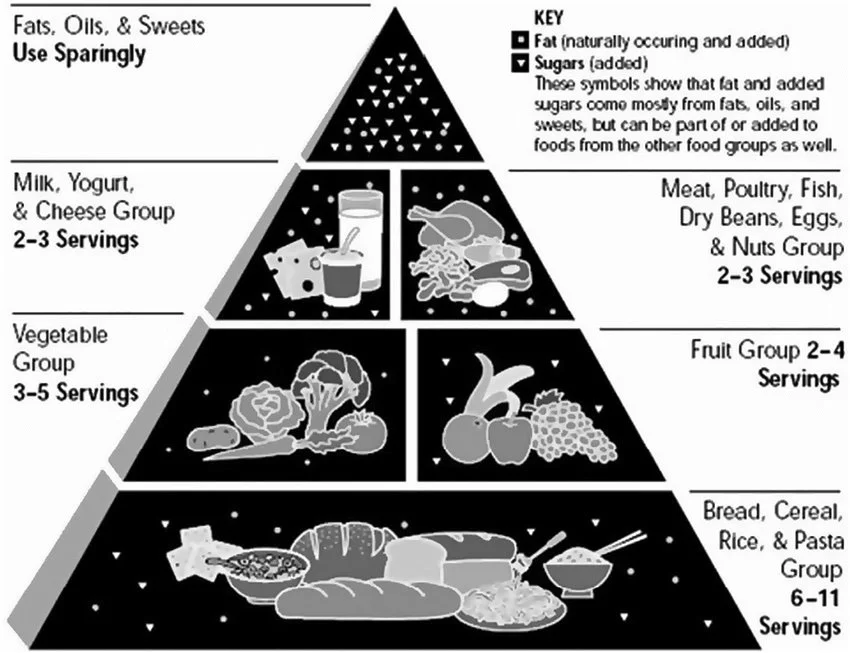Cholesterol
The Innocent Bystander
The number one killer in our society is heart disease. Heart disease has been the leading cause of death in the United States since 1921. This trend has continued for over a century, with heart disease maintaining its position as the top killer even through there has been various changes in public health and medical advancements. You may ask yourself this question: Why did heart disease start in the 1920’s? Well the answer may not surprise you.
The United States Department of Agriculture (USDA) was created on May 15, 1862. The United States Department of Agriculture (USDA) was established with several key purposes, which have evolved over time but fundamentally include:
Promoting Agricultural Development: Originally, the USDA was tasked with helping farmers by providing them with scientific and technological advancements to improve farming practices, crop yields, and animal husbandry. It aimed to support agricultural productivity and efficiency.
Ensuring Food Safety: The USDA oversees the safety of the nation's meat, poultry, and egg products through inspection and regulation to prevent foodborne illnesses. It also sets standards for food labeling and marketing.
Conservation and Environmental Stewardship: The USDA manages programs aimed at conserving soil, water, forests, and wildlife. Programs like the Conservation Reserve Program (CRP) pay landowners to remove environmentally sensitive land from agricultural production and convert it to vegetative cover.
Rural Development: The department works to improve economic opportunities in rural areas through housing loans, business development grants, and infrastructure projects. This includes initiatives for broadband access, energy, and community facilities.
Research and Education: Through agencies like the Agricultural Research Service (ARS) and the National Institute of Food and Agriculture (NIFA), the USDA conducts and funds research in agriculture, nutrition, food safety, and natural resources. It also supports education in these areas, including extension services that bring this knowledge to farmers and communities.
Nutrition Assistance Programs: The USDA administers several programs aimed at reducing food insecurity and malnutrition, such as the Supplemental Nutrition Assistance Program (SNAP), formerly known as food stamps, and the National School Lunch Program.
Market Facilitation: The USDA helps in the marketing of agricultural products both domestically and internationally. This includes market news services, export promotion, and support for commodity programs that stabilize agricultural markets.
Regulation and Policy: It develops and enforces regulations concerning agriculture, food, and natural resources, including policies on farm subsidies, trade, and agricultural biotechnology.
Shortly after the USDA was created, the first practical internal combustion engine was created by Étienne Lenoir in 1860. This was a gas engine that used a coal gas-air mixture for fuel. The first tractor, as we know it today, was developed in the late 19th century. The Froelich Tractor, invented by John Froelich in 1892, is often credited as the first successful gasoline-powered tractor. Froelich's tractor was unique because it could move both forward and backward under its own power, which was a significant advancement over earlier steam-powered agricultural machines. This lead to the advancement of what I call the Food Industrial Revolution.
The term "Food Industrial Revolution" isn't formally defined with a single, specific date, but it generally refers to the series of transformations in food production, processing, and distribution that occurred over an extended period, particularly during the 19th and 20th centuries.
Late 18th to Early 19th Century: The Agricultural Revolution in Britain, which improved agricultural productivity through innovations like crop rotation and selective breeding, set the stage for later changes in food production.
Mid to Late 19th Century:
Preservation and Canning: Nicolas Appert developed a method for food preservation in 1809, which was crucial for long-term storage of food. This was followed by the invention of canning by Peter Durand in 1810.
Refrigeration: The development of mechanical refrigeration by Carl von Linde in the 1870s revolutionized meat and dairy preservation and distribution, allowing for long-distance transport of perishable goods.
Milling and Baking: Advancements in milling technology led to the production of white flour, affecting baking and bread-making processes.
Late 19th to Early 20th Century:
Industrialization of Food Processing: The rise of factories for food processing, like those for cereal (e.g., Kellogg's in 1906) and meat packing, marked a significant shift towards mass-produced food products.
Chemistry and Nutrition: Understanding of nutrition led to the fortification of foods, like adding vitamins to flour or milk.
Post-World War II (Mid 20th Century):
Green Revolution: From the 1940s through the 1960s, innovations in agriculture, including high-yield crop varieties, chemical fertilizers, and pesticides, dramatically increased food production globally.
Food Science and Technology: Advances in food science led to the development of convenience foods, preservatives, additives, and packaging technologies that made food more accessible, longer-lasting, and less labor-intensive to prepare.
Late 20th Century to Present:
Globalization: The global supply chain for food has expanded, leading to year-round availability of a variety of foods from around the world.
Technological Innovations: From genetic modification of crops to precision agriculture, technology continues to transform how food is produced, processed, and distributed.
This lead to the increase in the consumption of sugar.The average consumption of sugar before the 1900s was significantly lower compared to today. Here's a comparison based on historical data:
Before 1900:
1700: The average consumption was around 4 pounds per person per year.
1800: By this time, consumption had risen to approximately 18 pounds per person per year.
1900: By the turn of the century, consumption had increased to about 5 to 60 pounds per person per year, with varying estimates. Some sources suggest an average of around 5 pounds, while others indicate it could be as high as 60 pounds per person.
Today:
Current estimates vary, but the average American now consumes between 130 to 152 pounds of sugar per year.
The diet of the average American in the 1700’s did depend on status but here is what they ate.
Meat and Protein:
Pork: Pork was extremely popular; it was easy to raise pigs, and they could feed on scraps, making pork accessible to many. Bacon, ham, and salt pork were staples.
Venison and Game: Hunting provided venison, turkey, duck, and other game. This was especially true in rural areas or where one could hunt.
Fish and Seafood: Coastal and riverine areas had abundant fish and shellfish. Cod, salmon, oysters, and clams were common.
Beef: While beef was available, it was less common than pork due to the need for larger pastures.
Dairy:
Milk and Cheese: Dairy products like milk, cheese, and butter were part of the diet, although preservation methods were limited, affecting availability.
Vegetables:
Greens: Greens like spinach, lettuce, and various wild greens were eaten, although seasonal availability played a significant role.
Roots: Turnips, carrots, and potatoes (though potatoes were not yet as widespread as they would become) were part of the diet.
Fruits:
Apples: Apples were widely grown, leading to cider being a common beverage.
Berries: Wild berries like blueberries, strawberries, and raspberries were consumed when in season.
Remember that heart disease became the number one killer in America in 1921 and remains so today. The first reason is because of very high sugar consumption. A second reason is corn oil and seed oils. The commercial production of corn oil began in the late 19th century. The first known industrial extraction of corn oil was in the 1880s by Benjamin H. Bear, who developed a process to extract oil from corn germ. However, it was not until the early 20th century that corn oil became more widely used and commercially available. The 1930s saw significant advancements in refining processes, making corn oil more stable and palatable, which increased its market presence. Post-World War II, with the growth of industrial agriculture in the U.S., corn oil became more abundant and affordable.
Because heart disease suddenly became the number one killer in America, Ansel Keys, American physiologist and nutritionist who is most famous for his research on diet, cholesterol, and heart disease did a study called the "Seven Countries Study," which was one of the first major epidemiological studies to suggest a link between dietary fat intake, especially saturated fat, and heart disease. This study was influential in shaping dietary guidelines around the world. The study began in the late 1950s with the aim of examining the relationship between diet, lifestyle, and heart disease across different culture. The study included cohorts from the United States, Finland, the Netherlands, Italy, Yugoslavia (now Serbia, Croatia, and Slovenia), Greece, and Japan. These countries were chosen to represent a wide range of dietary habits and incidence of coronary heart disease (CHD). One of the primary conclusions was the association between saturated fat intake and coronary heart disease. Keys reported that countries where diets were high in saturated fats tended to have higher rates of CHD. But is this true. It was later determined that Ansel Keys 7 countries was study was actually 20 countries but that he left out the countries that did not fit his model. This contradicts the French Paradox.
The "French Paradox" refers to an observed phenomenon where the French have a relatively low incidence of coronary heart disease (CHD) despite having a diet rich in saturated fats, particularly from cheese, butter, and other dairy products, along with a notable wine consumption. Here's a detailed look at this intriguing paradox:
Key Aspects of the French Paradox:
Dietary Habits: The French diet traditionally includes high amounts of saturated fats from sources like cheese, cream, and butter. However, they also consume a lot of fruits, vegetables, and whole grains, and their meals often include moderate amounts of red wine.
Wine Consumption: Red wine, in particular, has been highlighted as a potential factor due to its content of antioxidants like resveratrol, which might offer cardiovascular benefits.
Cooking and Portion Sizes: French cuisine often involves cooking methods that might be healthier, like using olive oil in the south of France. Additionally, the French tend to have smaller portion sizes than what might be common in countries like the United States.
As a result of Ansel Keys study key the contributors to heart disease of Sugar and corn oil were ignored. The food industry continued to promote and produce foods that caused chronic disease like Diabetes, Heart Disease and Cancer. The USDA created their first food pyramid in 1992 as a visual guide of foods that we should eat.
The first statin drug, lovastatin (originally known as mevinolin), was produced in 1978 by Akira Endo and his team at the Sankyo company in Japan. It was later approved for medical use in the United States in 1987 under the brand name Mevacor. For the last 45 years and with newer statin drugs produced, heart disease remains the number one cause of death in the United States. Ask yourself the question: With the advent of statins why is heart disease still the number one cause of death? The answer is that maybe cholesterol is not the cause of heart disease.
The Jupiter trial was formed testing a new statin rosuvastatin and the prevention of heart disease. The trial demonstrated a significant reduction in the primary endpoint. Rosuvastatin reduced the risk of these cardiovascular events by 44% compared to placebo (hazard ratio 0.56, 95% CI 0.46-0.69). There were also reductions in venous thromboembolism and total mortality, though the latter was not statistically significant. But in reality this was not the truth. The data actually showed no difference in reduction of a vascular event on both arms of the trial. The researchers, funded by Big Pharma, took a 1% slice of the data to get numbers that showed a reduction in disease. Any other researcher could take the same data and show the reverse, that the ones who did not take the statin had a 44% reduction in disease. The trial was a fraud but is still acknowledged by the science community as good science.
So what is the cause of heart and vascular disease. Well the answer is very simple:
Over consumption of sugar and processed foods
Transfats or vegetable oils, seed oils and margarine
Stress
Accelerating factors like smoking and environmental toxins etc…
Cholesterol is not on my list as a cause of vascular disease because it is an innocent bystander.













